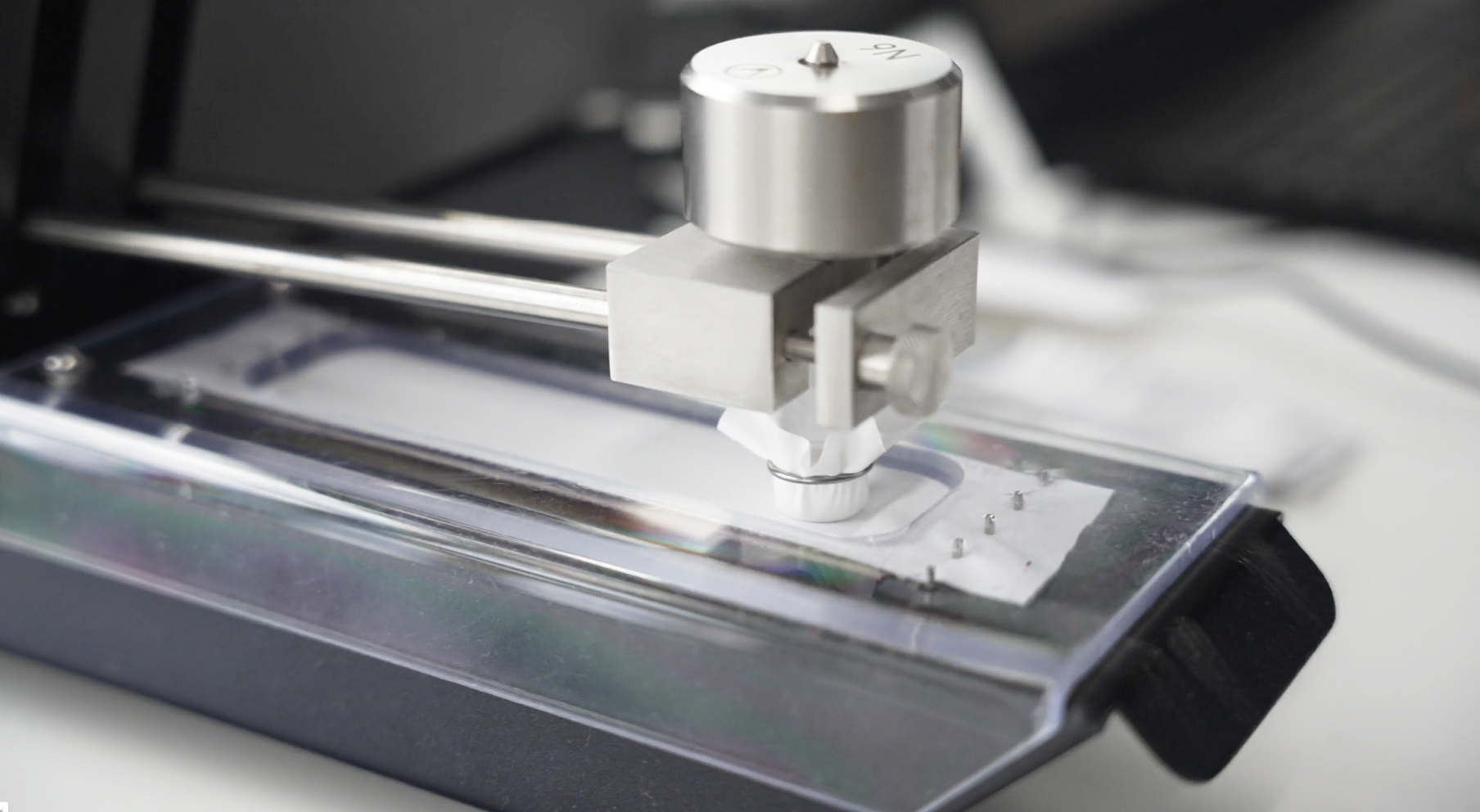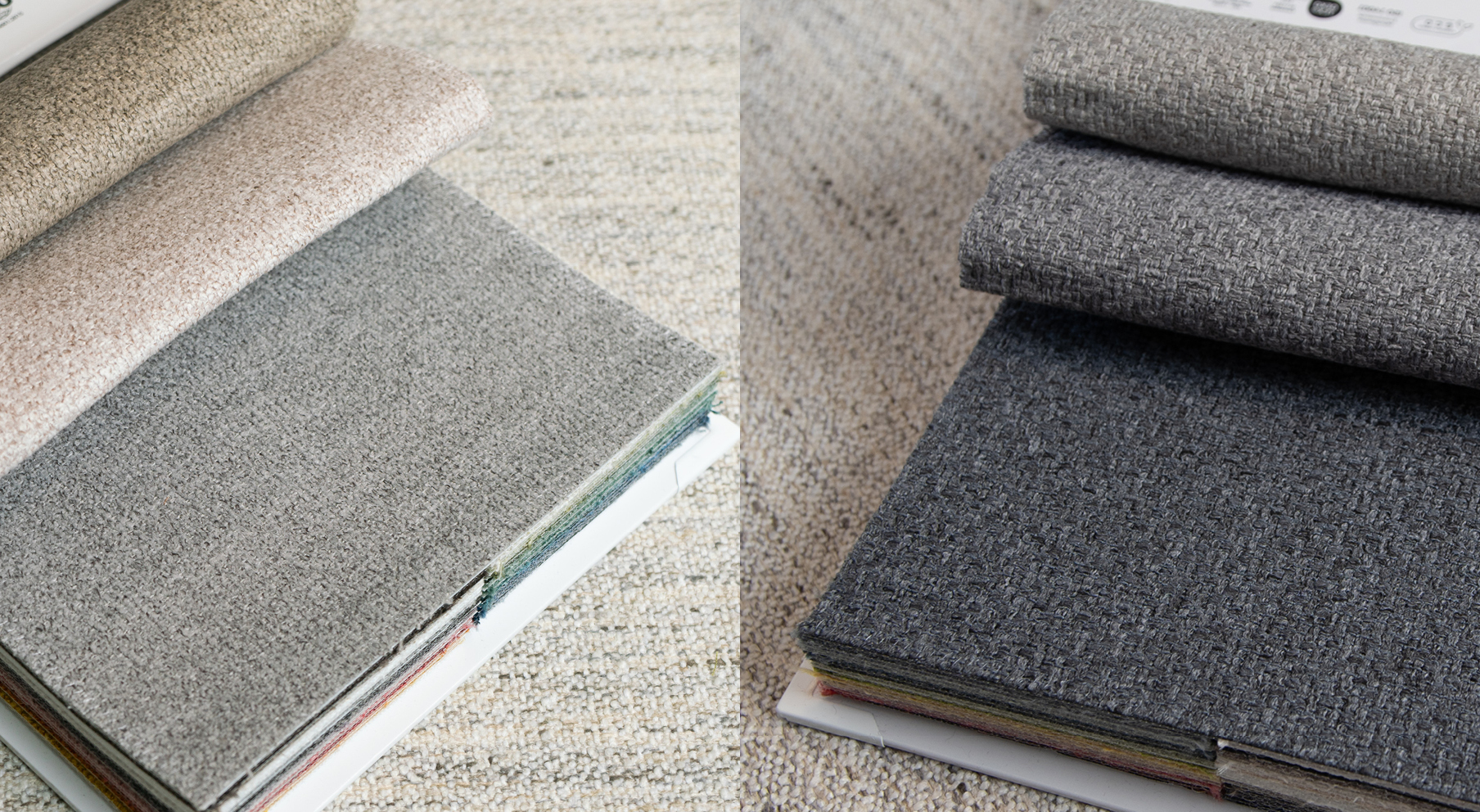FibreGuard: Creating Market-Leading Soft Neutral Fabrics
Summary: This article details FibreGuard's collaborative and multi-step process for developing high-performance, soft-touch upholstery fabrics in challenging neutral tones. Creating any collection of FibreGuard’s stain resistant fabrics has its own unique challenges, but designs in neutral colours are in a whole league of their own. Why?
Because neutral colours present issues with durability and colourfastness, the distinctive luxurious hand-feel of our fabrics has to be included too.
How can textile designers balance colourfastness with durability?
What are the design challenges presented by upholstery fabric that’s to be used in demanding settings? How can designers keep the colour locked into fabric even in demanding settings? Well, basically, on the one hand, stains can easily show up and build up on neutral coloured furniture.
Think of it like eating spaghetti with a white shirt on: cleaning the stains out sounds like a nightmare, right? The same goes for neutral upholstery. At a very foundational level, it has to be extremely easy to maintain and resistant to stains; no spots or watermarks allowed.
Colour fastness to rubbing
On the other hand, we have physical wear and tear. We’ll use a dining chair in a restaurant as an example, because it’s a high traffic area where looks are as important as the food. The colour of the fabric has to be colourfast to rubbing over time: people getting up and sitting down, over, and over again.
We work with Labotex, an independent and fully accredited textiles lab when we test for colourfastness. This is so that even darker colours won’t transfer onto diners’ clothing. This is measured through what’s known as the ‘crock’ test, aka colour fastness to rubbing.
How does the crock test work?
This test records the amount of colour that a fabric emits when rubbed (mainly for upholstery fabrics). A fabric sample is placed in the crock test machine. The fabric sample is rubbed with a wet and dry cotton cloth. The amount of colour that stains the cotton club is evaluated against the grey scale (grade 1 to 5).
Site-specific food and drink spills come into play as well. For restaurants think of stains like coffee, wine, sauces and condiments, all kinds of desserts. Let’s start with durability and that neutral colour palette and then go on into locking in the soft touch qualities that FibreGuard fabrics are known for.

Key Characteristics of FibreGuard’s Soft Touch Performance Fabrics:
- Luxuriously soft-touch hand-feel.
- Superior colourfastness against rubbing and UV exposure.
- Remarkable resistance to stains and long-term easy to clean properties and washability.
- All FibreGuard fabrics are safe and non-toxic and are certified as PFAS-free fabrics under the STANDARD 100 by OEKO TEX®. Read more about our eco certifications.
- Performance engineering achieved through advanced fibre treatments.
Why are colourfastness and durability important for light, natural fabric colours?
The end-use environment affects fabric colour in a few different ways, and all these need to be addressed before we can release any collection.
Why are neutral fabrics so hard to maintain?
Let’s think about a living room. For living room sofa fabrics, colour retention over time is impacted by a mix of material choice, dye quality, usage patterns, and environmental exposure.
- Stain Visibility: Spots and watermarks could easily show up and build up.
- Colour Degradation: Direct sunlight/UV rays could cause noticeable fading.
- Friction Wear: Sitting and rubbing can dull the colour and wears down the surface.
We’re passionate about fabrics, and dealing with all these challenges is what we do best. We work with advanced fibre treatments and developments with our mills to ensure colourfastness. They're also carefully combined with extra soft touch finishes we've developed to give our fabrics that remarkably soft feel.
It's a hard line to walk: fabrics that are over-engineered for performance metrics could leave the finished fabric feeling stiff and coated. It’s harder to create a neutral fabric that feels soft and stays soft, while still performing and feeling exactly how we want it to.

How does FibreGuard achieve that luxuriously soft hand-feel?
Here’s a brief rundown on how we create our sensory-rich upholstery with our soft-touch fabric designs:
- Softness is Developed, Not Accidental: The luxurious hand-feel comes from years of developing our "soft-touch design" skills
- Requires Intense Collaboration: Achieving the perfect hand-feel is a collaborative effort, involving close work and continuous improvement with factories and mills
- Multiple Levers for Texture: Softness is achieved not just through collaboration, but also by controlling the fibre choice, weave, and specialised fibre treatments.
- Production Techniques are Key: Techniques like extra brushing or tumbling can give a fabric that really soft feel (e.g., making a fabric that looks like linen also feel like linen).
How do we know what colours will perform best in our newest collections?
This is all great, but how do we choose what colour to even begin with when we’re designing a new collection? I mean, neutral colours have quite a broad range if you think about it, from white to ecru to natural.
Our design director Didier Pické describes the ideation process as both art and science. Read our chat with him on all things design in Design Is Life.
Here’s how it works:
Step 1: Leverage Global Market Insights.
We have access to unparalleled market data, thanks to our worldwide presence in over 100 countries. Now combine this with ten million metres of fabric shipped annually.
Step 2: Identify Market Opportunities.
We analyse this data to pinpoint specific opportunities where demand and design potential align. Our market insights tell a clear story about how industry trends are influencing our colour designs.
Our sales data breaks it down:
- Natural tones lead at approximately 30% of total sales
- Silver stands at approximately 20%
- Ecru comes in at approximately 15%
Browns as well as more vivid colours make up the balance of the rest of our sales. After all, you need to have all ice-cream flavours to sell vanilla.
We know that it’s important to have a delicious range of colours, but we know that neutrals will make up the bulk of our sales.
Step 3: Develop Targeted Collections.
By staying actively engaged in the market, we develop collections in specific colours with strong confidence in their success. Together with our data on colour, we also have data that tells us which fabric characteristic types make up most of our global sales.
Using this data, we are able also to define collection characteristic types such as our bestselling plush fabrics; soft-pile velvets, cosy chenilles and fluffy boucle.
Step 4: Sample and Prototype.
The collection moves through multiple rounds of sampling, testing, and refinement with our mills, ensuring that they meet the strictest production criteria and the ‘luxurious touch’ that is deeply embedded in FibreGuard’s fabric DNA.
Step 5: Strict Evaluation.
Each prototype is evaluated not just for its appearance but for its tactile qualities, performance characteristics, and production viability.
Step 6: Final Approval and Production.
A FibreGuard fabric can only move into production after strict quality testing and approval.

Showing neutral colourways in digital room scenes
We don't ‘just’ design fabrics, we also design room scenes to go with them.
How? By matching fabrics’ colour and texture, with specific interior styling, to spark off the imaginations of our customers. Why? We then mix these ideas with the new rendering technology from Twinbru.
Nancy Claessens, our visual production director, guides us through the whole process. Her valuable work within our Trends team also gives us ideas for scenes that really speak to the demands of the moment.
She aims to create room scenes that are as diverse as possible, showcasing our fabrics in many interior styles. These include classic, transitional, casual, modern contemporary, and even high luxury designs. Neutral colours, thankfully, are suited for all kinds of interior styles, thanks to their versatility!
Nancy notes that different fabric textures and colours behave differently in different kinds of light, so the lighting within the scene is an important part of the overall effect. For example, colours tend to appear brighter and deeper in velvet, whereas neutrals behave differently. They’re often showcased in textured qualities like bouclé, to give the same interest and depth without falling flat.
However, soft fabrics like velvet or chenille are really striking when paired with our special fabric technologies. This is especially true in colours like beige, grey, and natural.

Let’s wrap up:
Behind every neutral-toned upholstery fabric lies the dedication and expertise of textile designers who balance aesthetics with performance. At FibreGuard our design process is driven by market insights, ensuring that each collection meets both style and durability demands. As natural tones continue to dominate sales, timeless elegance and functionality remain at the heart of our successful textile designs.
Key takeaways from this article:
- Integrated Performance and Aesthetics: Developing market-leading neutral upholstery fabrics requires successfully balancing superior performance with a desired luxurious soft-touch hand-feel.
- Data-Driven Design Strategy: FibreGuard's collection development is driven by comprehensive global market insights and sales data. This data confirms strong demand for neutral tones and allows for the targeted creation of best-selling fabric characteristic types.
- Advanced Engineering for Softness and Stamina: Achieving the dual goals of performance and softness is a highly collaborative, multi-step process that utilises specialised fibre treatments, precise control over weave and fibre choice, and production techniques (e.g., brushing and tumbling).
- Rigorous Quality Assurance: Fabric prototypes undergo strict, independent quality testing, including the 'crock' test, to ensure required colourfastness and performance metrics are met before moving to final production.
- Safety and Compliance: The fabrics are certified as safe, non-toxic, and PFAS-free, meeting the strict criteria of the STANDARD 100 by OEKO TEX®.
- Strategic Visualisation: Digital room scenes are designed using advanced rendering technology (Twinbru) to effectively showcase the fabrics' texture and colour under various lighting conditions and in diverse interior styles, highlighting the versatility of the neutral palette.
